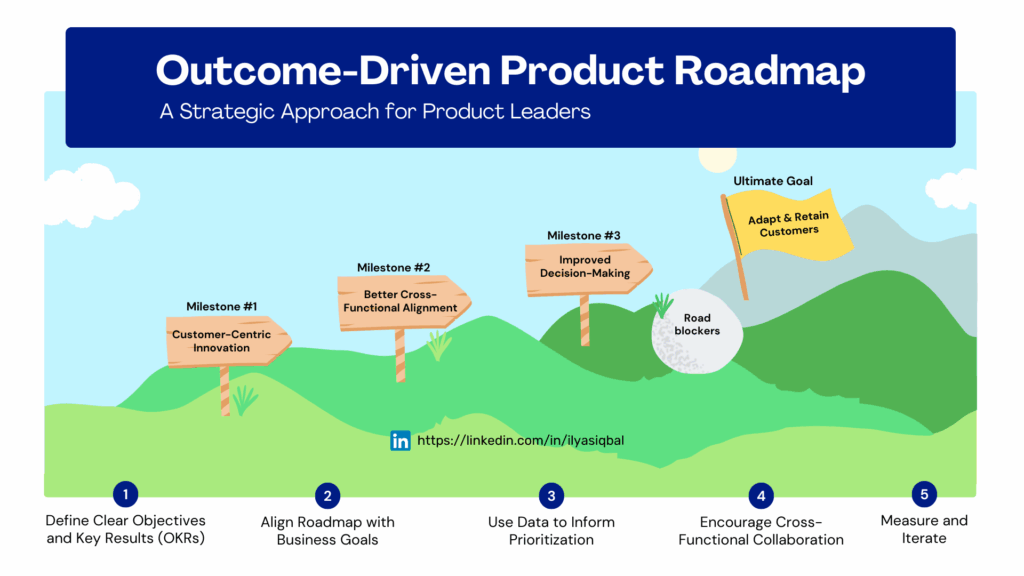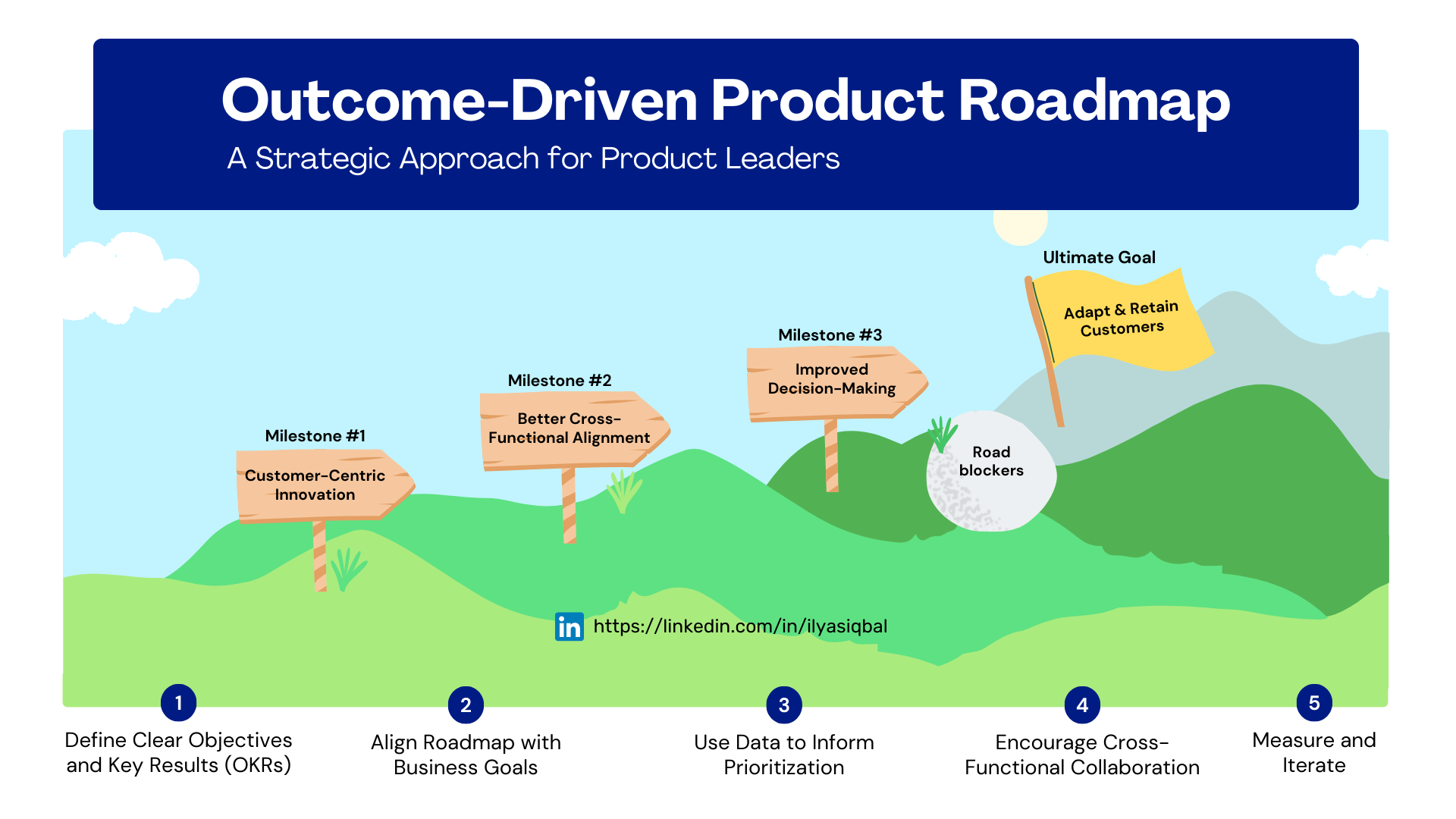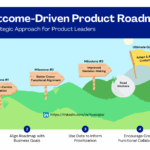
Introduction
In today’s fast-paced digital landscape, product leaders are shifting from feature-based roadmaps to outcome-driven roadmaps. Unlike traditional roadmaps that focus on delivering a set of features or functionalities, outcome-driven roadmaps emphasize the desired business and customer outcomes. This strategic approach ensures that product teams are aligned with overarching business goals and that every initiative contributes to meaningful impact.
What is an Outcome-Driven Roadmap?
An outcome-driven roadmap prioritizes the measurable results a product team aims to achieve rather than just listing features or releases. It focuses on answering questions like:
- What business problem are we solving?
- How will this improve the user experience or drive engagement?
- What metrics will determine success?
Instead of defining a rigid timeline of features, an outcome-driven roadmap sets key objectives and allows flexibility in execution. This approach is particularly effective in agile environments, where teams iterate based on customer feedback and market changes.
Also read: Applying Design Thinking to build innovative Cloud based AI Products
How Outcome-Driven Roadmaps Add Value
1. Customer-Centric Innovation
By focusing on outcomes rather than outputs, product teams can ensure they are delivering real value to customers. Features are only built if they contribute to solving a customer pain point or improving an experience.
2. Better Cross-Functional Alignment
Outcome-driven roadmaps foster collaboration between product, marketing, engineering, and sales teams. Everyone works toward shared objectives, leading to more cohesive product development.
3. Improved Decision-Making
With clearly defined success metrics, product leaders can make data-driven decisions. If a particular initiative isn’t driving the desired outcome, teams can pivot quickly without being tied to an arbitrary feature release.
4. Flexibility and Adaptability
Market conditions and customer needs change rapidly. This approach allows teams to adjust their priorities dynamically, ensuring that they remain competitive and responsive.
How Leaders Can Implement Outcome-Driven Roadmaps
1. Define Clear Objectives and Key Results (OKRs)
Start by identifying the key business and customer objectives. Examples include:
- Increase customer retention by 15%.
- Reduce checkout time by 20%.
- Improve user onboarding completion rate by 30%. These objectives should be specific, measurable, and time-bound.
2. Align Roadmap with Business Goals
Ensure that each initiative on the roadmap contributes to broader company goals. This alignment prevents teams from working on features that may be exciting but do not drive real impact.
3. Use Data to Inform Prioritization
Leverage customer feedback, analytics, and A/B testing to prioritize initiatives that will have the greatest impact on key outcomes. Avoid relying solely on intuition or stakeholder pressure.
4. Encourage Cross-Functional Collaboration
Engage stakeholders from different departments early in the roadmap planning process. This ensures alignment and prevents silos from forming.
5. Measure and Iterate
Continuously track progress against key metrics. If an initiative isn’t delivering the expected outcome, be prepared to adjust strategies or pivot to a new approach.
Conclusion
Outcome-driven roadmaps are transforming how product teams plan and execute their strategies. By focusing on measurable impact rather than feature lists, product leaders can drive real value for both their customers and their businesses. Implementing this approach requires a shift in mindset, but the rewards—greater agility, better alignment, and stronger customer satisfaction—make it well worth the effort.









